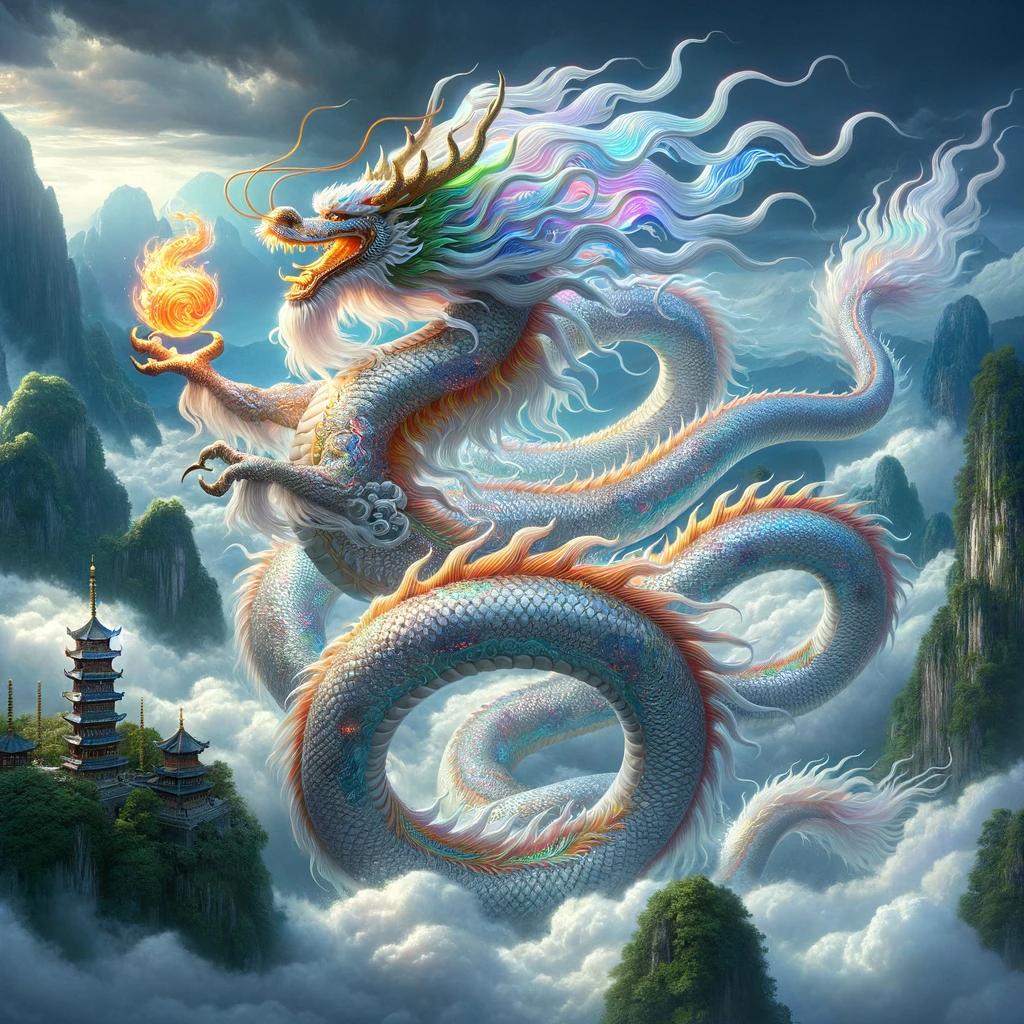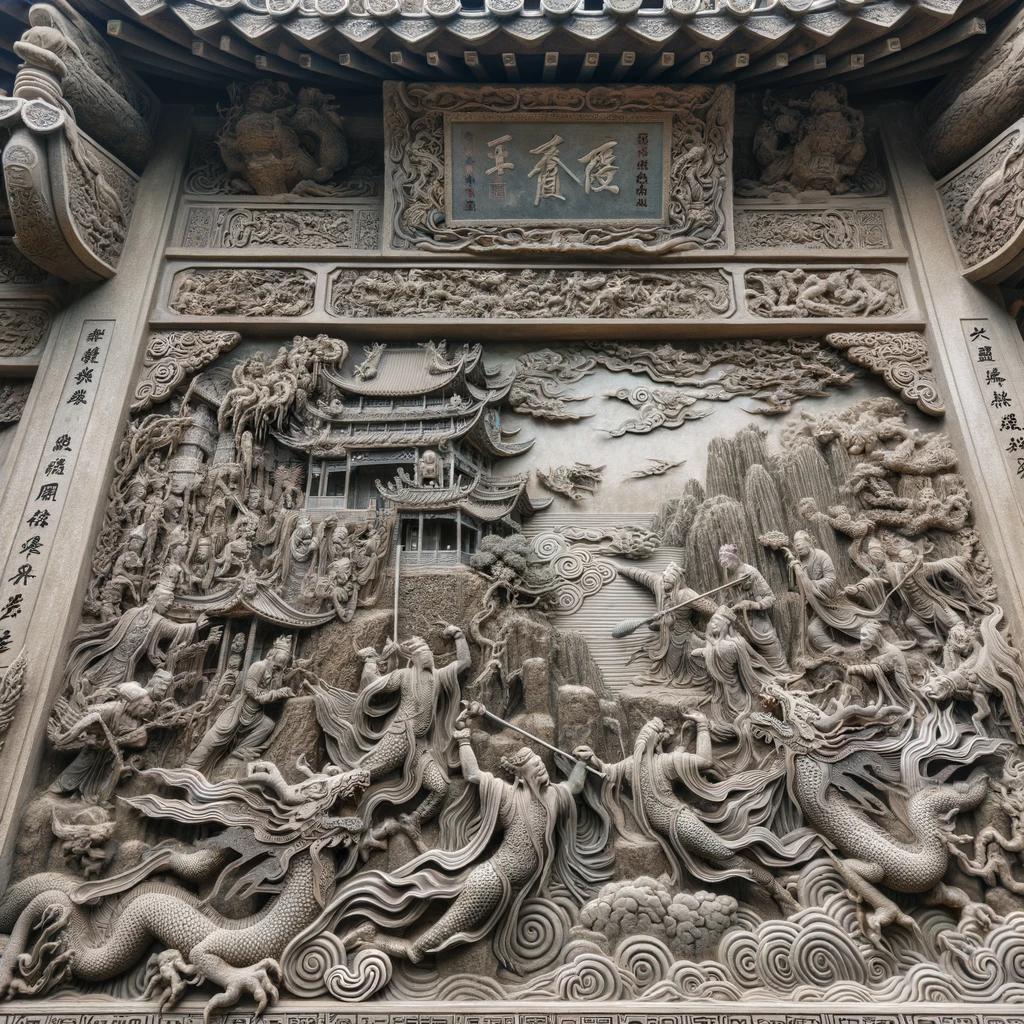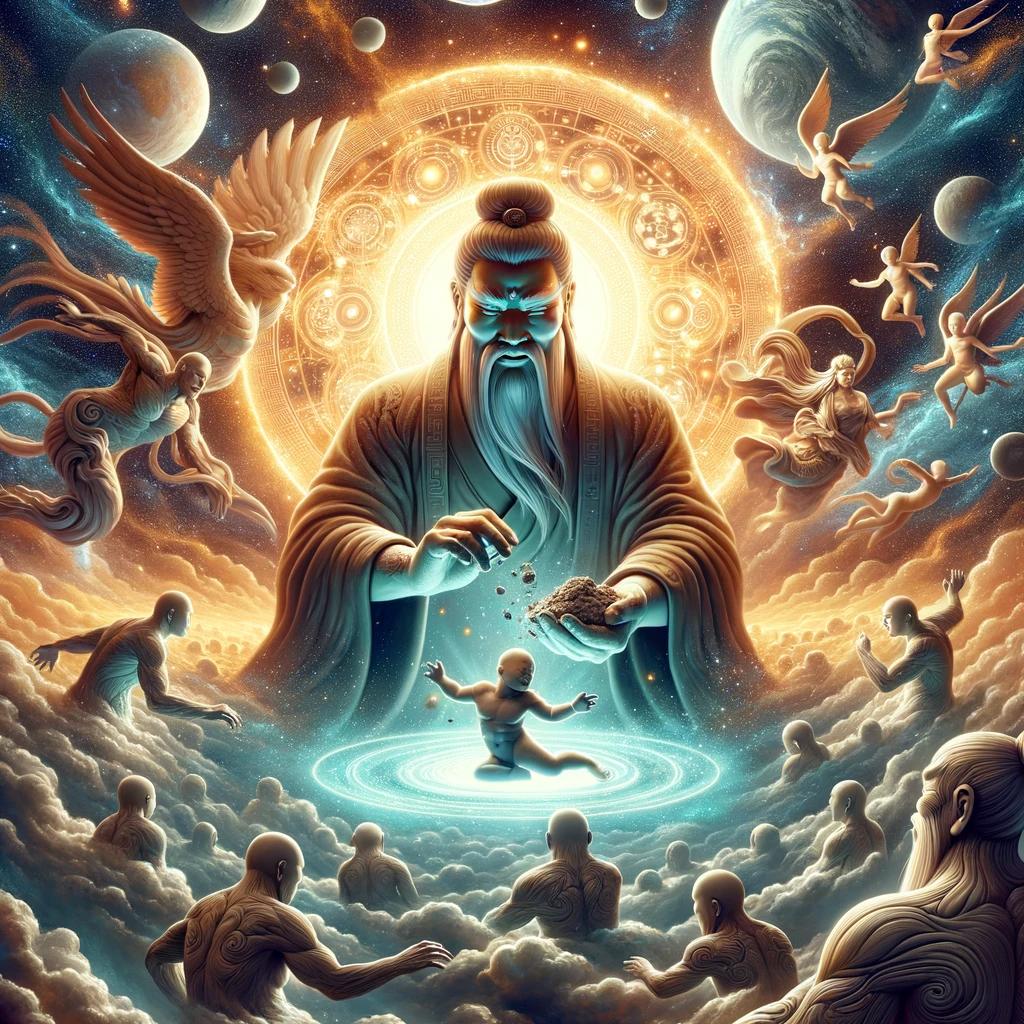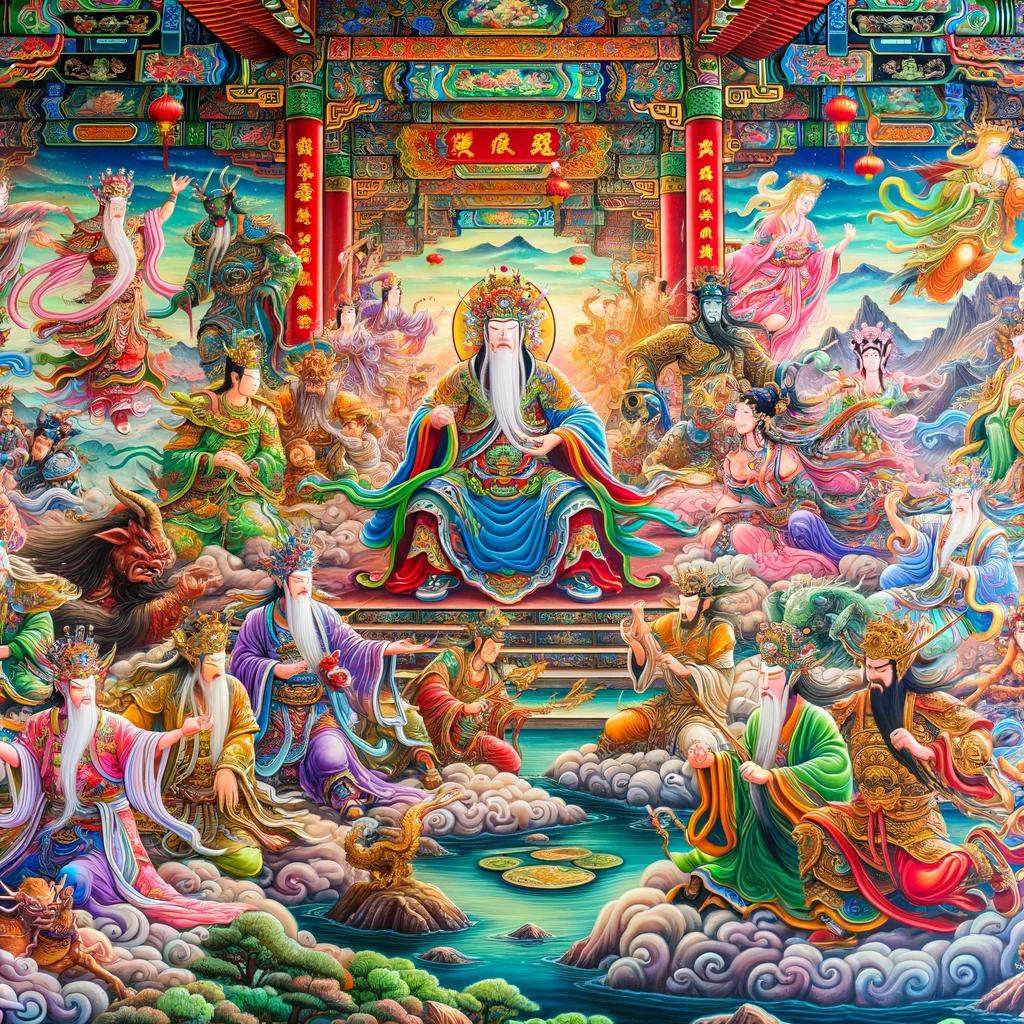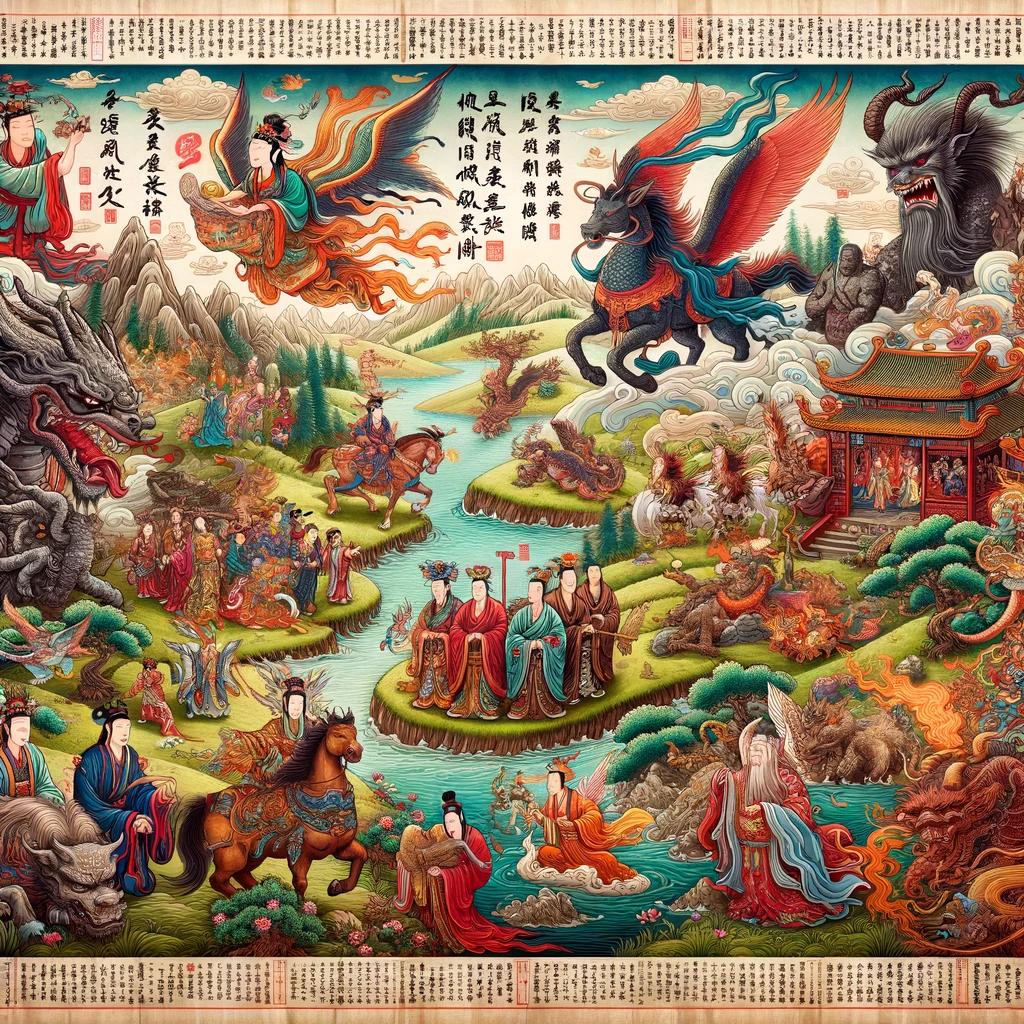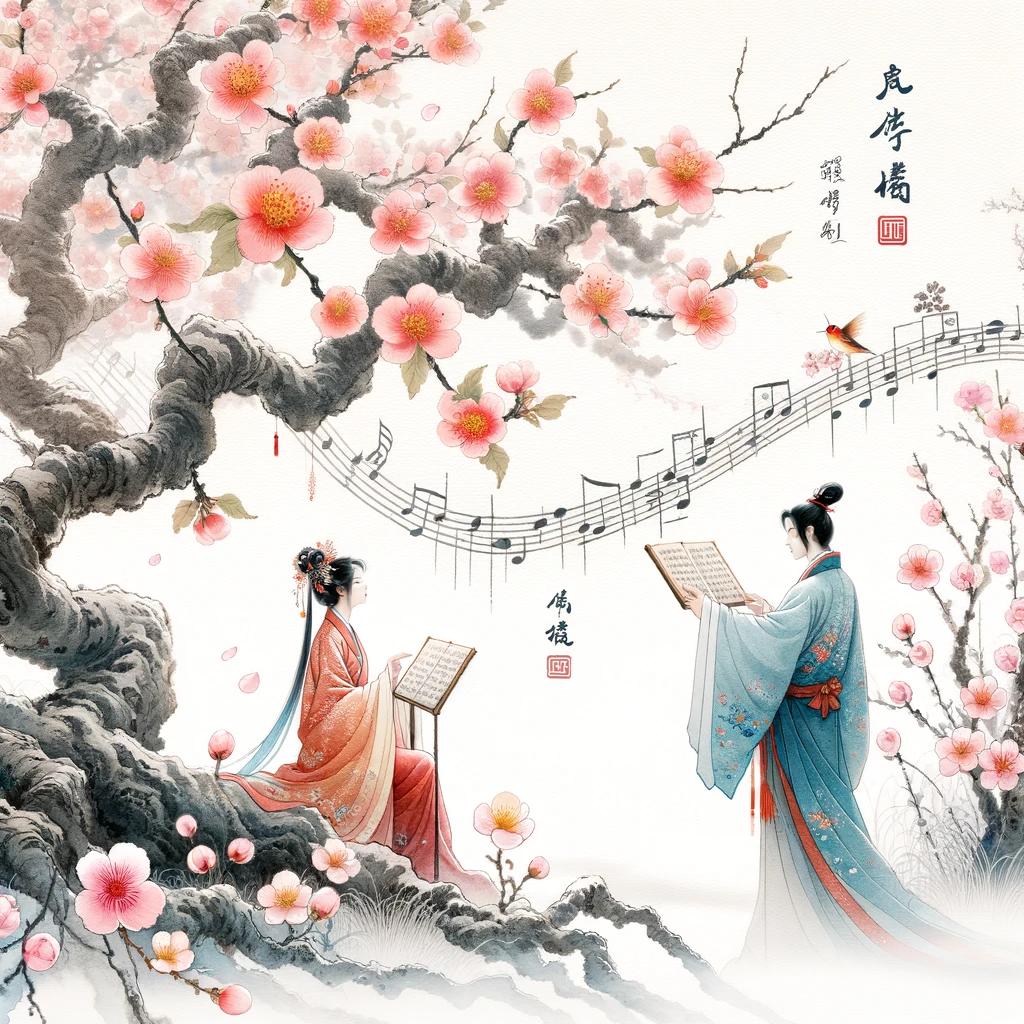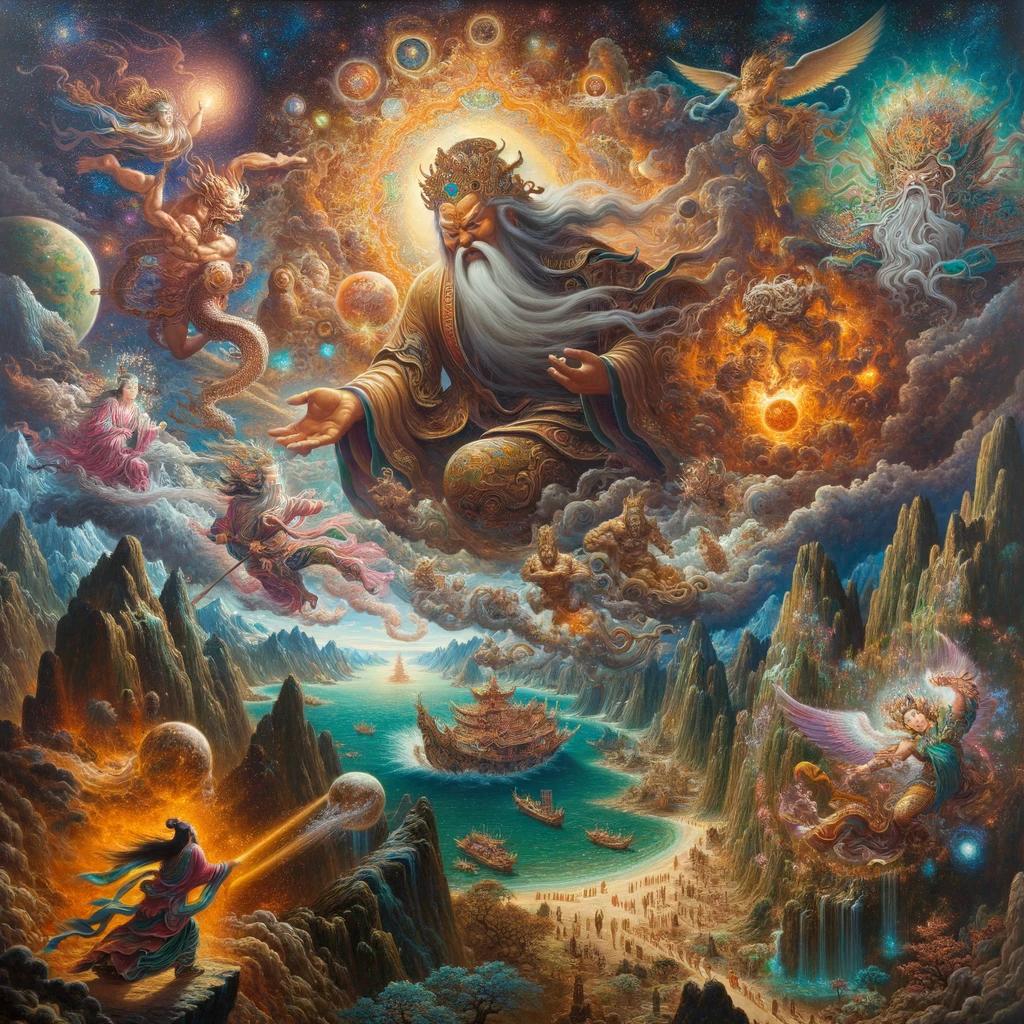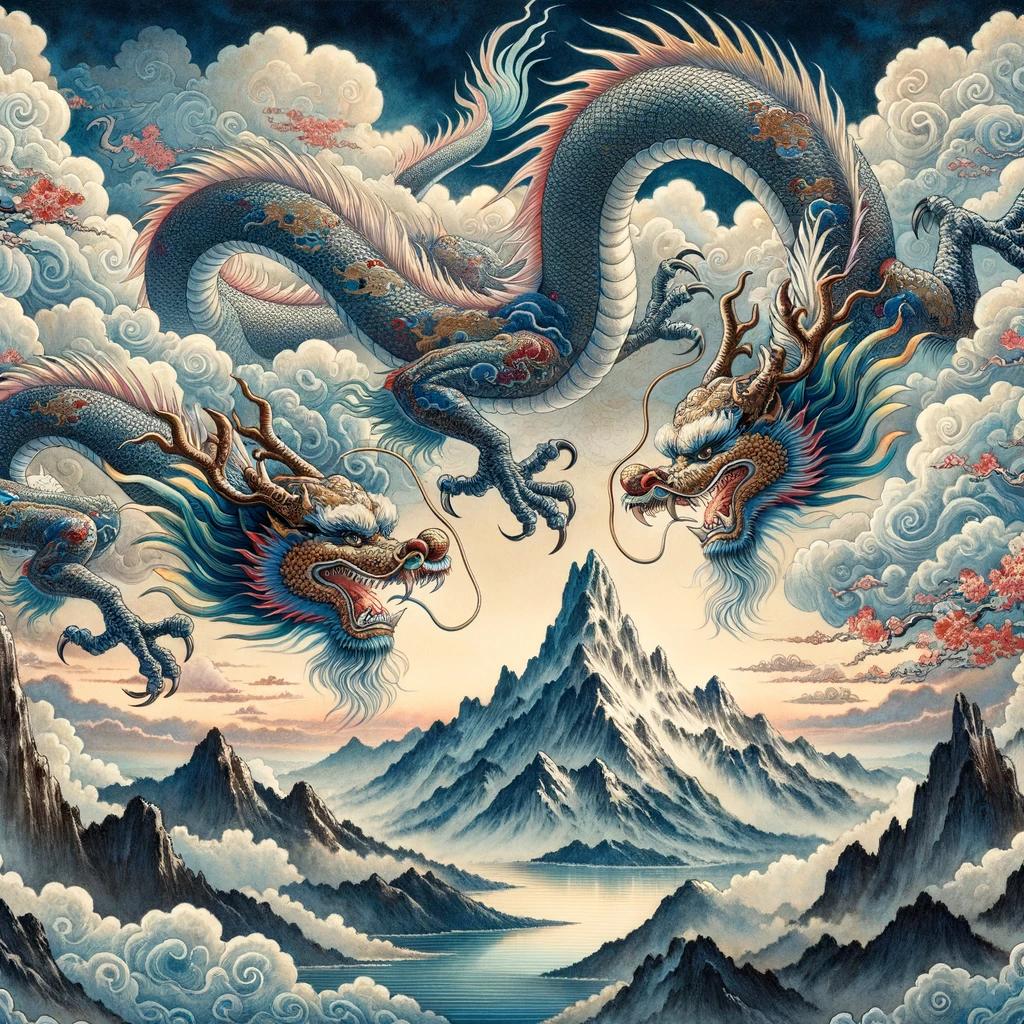How Old is Chinese Mythology: Exploring the Ancient History and Origins
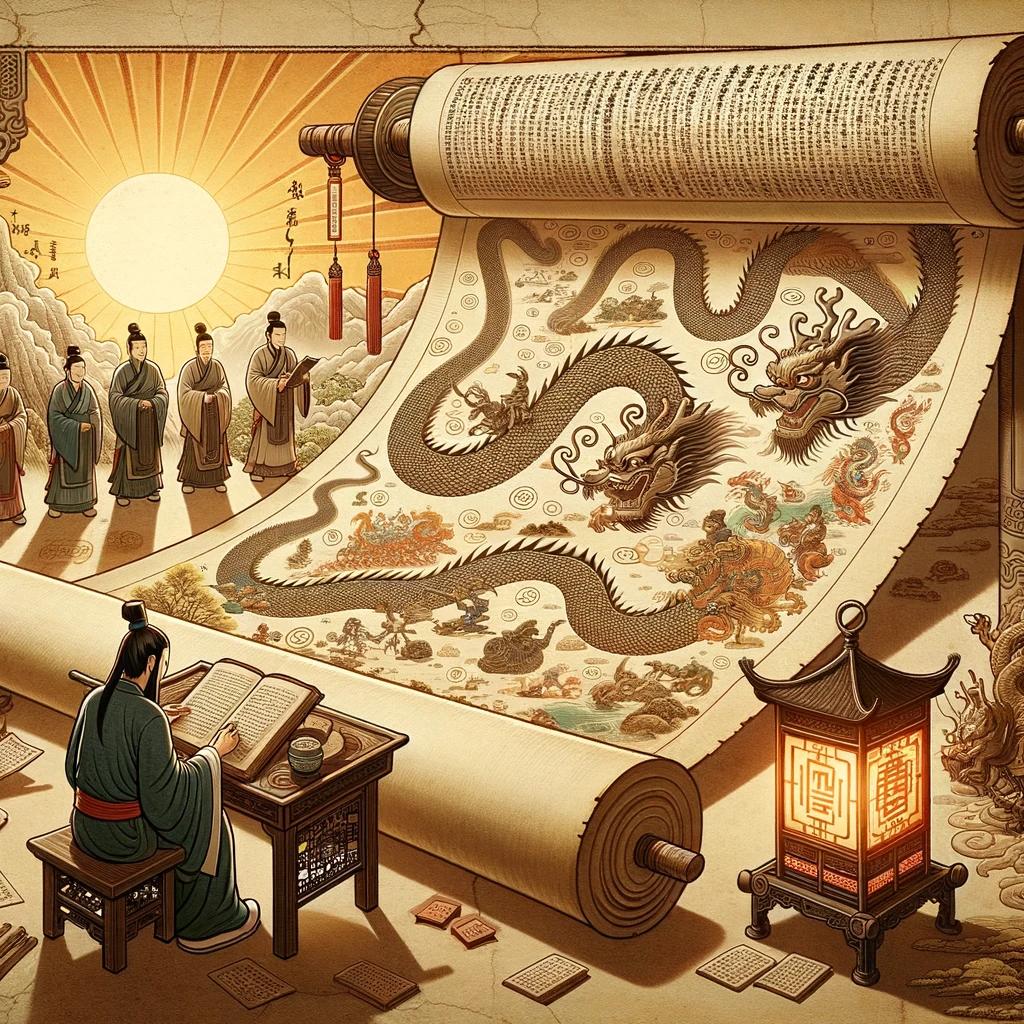
Chinese Mythology, with its origins dating back thousands of years, offers a fascinating glimpse into the rich history and cultural heritage of China. This article explores the age and significance of Chinese mythology, delving into its ancient myths, legendary figures, and the profound impact it has had on art, literature, and society.
From creation stories to tales of powerful gods and goddesses, Chinese mythology continues to captivate and inspire both locally and globally. Join us on this journey of discovery as we delve into the ancient roots and enduring legacy of Chinese Mythology.
Understanding Chinese Mythology
Chinese Mythology is a fascinating subject that provides insights into the ancient beliefs and traditions of China. In this section, we will explore the origins and history of Chinese mythology, delve into its key elements and themes, and examine how it compares to other mythological traditions.
Origins and History of Chinese Mythology
The origins of Chinese mythology can be traced back thousands of years, deeply rooted in the rich history and culture of China. It encompasses a wide range of myths, tales, and legends that have been passed down through generations.
These stories shed light on the early beliefs and worldviews of the Chinese people.
Key Elements and Themes in Chinese Mythology
Chinese mythology is characterized by a diverse range of elements and themes that reflect the values, traditions, and cosmology of ancient China. These include creation myths, tales of gods and goddesses, legendary heroes, supernatural creatures, and more.
The intertwining of nature, spirituality, and human existence is central to Chinese mythological narratives.
Comparisons with Other Mythological Traditions
While every culture has its own unique mythology, Chinese mythology stands out for its distinctiveness and cultural significance. By comparing it with other mythological traditions from around the world, we can gain a broader perspective on the universal themes and motifs that connect different cultures.
Understanding the similarities and differences can deepen our appreciation for the richness and diversity of human storytelling.
As we delve further into the realm of Chinese mythology, we will explore its timeline, major myths and legends, its impact on culture and society, contemporary beliefs and practices, the debunking of misconceptions, efforts in preservation, and its relevance in modern society.
Join us on this captivating journey through the mystical world of Chinese mythology.
The Timeline of Chinese Mythology
The timeline of Chinese mythology is a fascinating journey through ancient myths, legendary figures, and their significance in historical events. Let’s explore the rich tapestry of Chinese mythology and discover its enduring legacy.
Ancient Myths and Legends
Ancient Chinese mythology is steeped in captivating myths and legends that date back thousands of years. These stories shed light on the origins of the universe, the creation of humans, and the interactions between gods, goddesses, and mortals.
From the myth of P’an-Ku, the first conscious being and creator of the universe, to the story of the goddess Nüwa repairing the heavens after the Great Flood, these ancient myths provide insight into the beliefs and values of ancient Chinese civilization.
Mythological Figures and Gods
Chinese mythology is replete with a rich pantheon of gods and goddesses who hold significant roles in the cosmic order and the lives of mortals. From Shangdi, the supreme god and creator of the universe, to Nuwa, the goddess who crafted humans from clay, these mythological figures embody various aspects of nature, society, and human existence.
Exploring their stories and attributes not only unravels the complexities of Chinese mythology but also provides a deeper understanding of the cultural and societal ideals that shaped ancient China.
Significance of Chinese Mythology in Historical Events
Chinese mythology played a crucial role in shaping historical events and influencing the cultural fabric of ancient China.
The tales of heroes and heroines, such as Yu the Great, who controlled the devastating floods and laid the foundation for China’s first dynasty, highlight the close interplay between mythology and history.
Moreover, the belief in divine intervention and the worship of ancestral spirits shaped rituals and practices that influenced governance, social norms, and the spiritual life of the Chinese people.
By delving into the timeline of Chinese mythology, we unravel the rich tapestry of ancient beliefs, legends, and figures that have left an indelible mark on Chinese culture and continue to captivate and inspire us today.
Impact of Chinese Mythology on Culture and Society
Chinese mythology has had a profound influence on various aspects of Chinese culture and society. From art and literature to festivals and modern interpretations, the impact of Chinese mythology is far-reaching and enduring.
Influence on Art, Literature, and Performing Arts
Chinese mythology has been a rich source of inspiration for artists, writers, and performers throughout history. Its captivating tales, colorful characters, and mystical creatures have been depicted in traditional paintings, sculptures, and calligraphy.
Classic literary works, such as ‘Journey to the West’ and ‘Romance of the Three Kingdoms,’ are steeped in Chinese mythological elements. Traditional Chinese opera, dance, and theatrical performances often draw upon mythological stories and characters, bringing them to life on stage.
Festivals and Rituals Connected to Chinese Mythology
Many traditional Chinese festivals and rituals are deeply rooted in mythology. For example, the Spring Festival, also known as Chinese New Year, is celebrated to ward off evil spirits just as the mythical beast Nian was driven away in ancient times.
The Dragon Boat Festival commemorates the heroic poet Qu Yuan and involves dragon boat races. The Mid-Autumn Festival, with its mooncakes and lantern displays, is associated with the lunar goddess Chang’e and the Jade Rabbit.
These festivals not only serve as cultural celebrations but also help maintain a connection to Chinese mythology through generations.
Modern Interpretations and Adaptations of Chinese Myths
Chinese mythology continues to inspire modern reinterpretations and adaptations. In literature, contemporary authors often draw upon mythological themes to create captivating narratives that resonate with readers. Films and television series, such as ‘The Legend of the White Snake’ and ‘Ne Zha,’ bring ancient myths to life using modern storytelling techniques.
Chinese mythology has also found its place in video games, graphic novels, and other forms of popular media, allowing new generations to explore and engage with these timeless tales.
- Chinese mythology has been a rich source of inspiration for artists, writers, and performers throughout history.
- Traditional Chinese festivals and rituals are deeply rooted in mythology.
- Chinese mythology continues to inspire modern reinterpretations and adaptations in literature, film, and other forms of media.
Major Myths and Legends in Chinese Mythology
Chinese mythology is rich with captivating tales and legends that have been passed down through generations.
These myths provide a fascinating glimpse into the beliefs and values of ancient Chinese civilizations. From creation stories to heroic adventures, Chinese mythology is filled with a wide array of intriguing characters and fantastical beings.
Creation Myths and the Origins of the Universe
In Chinese mythology, there are various creation myths that explain the origins of the universe. One of the most well-known is the myth of Pangu, the first sentient being who emerged from chaos.
Pangu’s immense body grew over thousands of years, separating the heavens and the earth, and eventually giving birth to the world as we know it. This myth reflects the belief in harmony between the natural elements and the balance of Yin and Yang.
Tales of Gods and Goddesses
Chinese mythology is replete with gods and goddesses who possess extraordinary powers and play significant roles in the celestial hierarchy. These divine beings include Shangdi, the supreme god and creator of the universe; Nuwa, the goddess who shaped humanity from clay; and Guanyin, the goddess of mercy and compassion.
These tales explore the complexities of the divine realm and highlight the interplay between the mortal and immortal worlds.
Legendary Heroes and Heroines
Chinese mythology features a host of legendary heroes and heroines who embody virtues such as bravery, wisdom, and righteousness. One of the most celebrated heroes is Houyi, an expert archer who saved the world by shooting down nine suns.
Another renowned figure is Mulan, a courageous warrior who disguised herself as a man to join the army in place of her father. These tales inspire audiences with tales of valor and selflessness.
Supernatural Beings and Creatures
Chinese mythology is teeming with a wide array of supernatural beings and creatures, each with its own unique characteristics and symbolism. The dragon holds a prominent place in Chinese folklore, representing power, luck, and imperial authority.
The mystical phoenix is associated with beauty, grace, and regeneration. Other mythical creatures such as the Qilin, a benevolent creature of good fortune, and the Zhulong, a draconic creature associated with time and eclipses, add depth and enchantment to the mythological world.
These major myths and legends form the backbone of Chinese mythology, providing insights into the cultural and spiritual beliefs of ancient China. From the creation of the universe to the heroic feats of legendary figures, these tales continue to captivate and inspire people worldwide, offering a glimpse into the rich tapestry of Chinese culture.
Contemporary Beliefs and Practices
Chinese mythology continues to have a significant role in shaping religious beliefs and practices in modern times. It intertwines with various spiritual traditions and is deeply embedded in the cultural fabric of China.
Here are some key aspects of contemporary beliefs and practices related to Chinese mythology:
The Role of Chinese Mythology in Religion
Chinese mythology plays a crucial role in religious practices, particularly in the three major belief systems: Confucianism, Taoism, and Buddhism. Mythical figures and stories are often incorporated into rituals, prayers, and ceremonies.
These tales serve as moral guidelines and inspire devotees to seek guidance from divine beings.
Chinese Mythology in Folklore and Superstitions
Beyond organized religion, Chinese mythology permeates folk traditions and superstitions. Many customs and rituals are rooted in ancient myths and legends, reflecting a belief in the mystical nature of the world.
From offering sacrifices for good luck to avoiding certain actions based on superstitious beliefs, Chinese folklore is alive in everyday life.
Popular Beliefs and Customs Rooted in Mythology
Chinese mythology influences various popular beliefs and customs. One example is the celebration of the Lunar New Year, where mythical creatures like the dragon and lion are featured in vibrant parades to usher in good fortune and drive away evil spirits.
Additionally, the practice of ancestor worship illustrates the connection between the living and the deceased, as myths often depict ancestors as influential figures.
These contemporary beliefs and practices demonstrate the enduring impact of Chinese mythology on the spiritual and cultural landscape of China.
By keeping these ancient stories alive, individuals and communities continue to find meaning, guidance, and a sense of connection to their shared heritage.
Debunking Myths and Misconceptions
In the realm of Chinese mythology, there are various myths and misconceptions that have developed over time. By delving deeper into the subject, we can separate historical facts from the realm of mythology and shed light on the truths behind them.
Separating History from Mythology
It’s important to recognize that Chinese mythology contains a mix of historical events and mythical tales. The challenge lies in distinguishing between what actually happened and what exists purely in the realm of folklore and legends.
By thoroughly examining ancient texts, archaeological findings, and historical records, researchers are able to peel back the layers of myth and uncover the historical foundations of Chinese mythology. This process allows us to gain a clearer understanding of the cultural and societal contexts in which these myths originated.
6.2. Questioning Stereotypes and Cultural Appropriation
Over the years, stereotypes about Chinese mythology have emerged, often perpetuated by external cultures. It is important to question and debunk these stereotypes, as they can perpetuate misunderstandings and misrepresentations of Chinese culture.
One common misconception is the belief that all Chinese mythology is homogeneous and can be reduced to singular archetypes or symbols. In reality, Chinese mythology is incredibly diverse, with regional variations and unique characteristics attributed to different deities and mythical figures.
Cultural appropriation is another issue that needs to be addressed when discussing Chinese mythology. It is vital to respect and understand the cultural and historical significance of these myths, avoiding superficial or misinformed reinterpretations that may oversimplify or distort their meanings.
Exploring Different Interpretations and Schools of Thought
Chinese mythology, like any mythology, can be subject to multiple interpretations and different schools of thought. Scholars and enthusiasts continue to explore and analyze various perspectives and theories to gain a comprehensive understanding of its complexities.
By examining ancient texts, folk customs, and regional beliefs, researchers can uncover different layers of meaning within Chinese myths. This exploration allows for a more nuanced understanding, capturing the diverse range of interpretations and perspectives that have shaped Chinese mythology throughout history.
In conclusion, debunking myths and misconceptions surrounding Chinese mythology is essential for a more accurate appreciation of its cultural significance. By separating history from mythology, questioning stereotypes and cultural appropriation, and exploring different interpretations, we can gain a deeper understanding of this ancient and complex tradition.
Preserving and Sharing Chinese Mythology
Preserving and sharing Chinese mythology is of great importance in understanding the cultural heritage and historical significance of China. Efforts in mythological research and preservation, digital platforms and media for promoting Chinese mythology, and cultural heritage sites and museums all play a crucial role in keeping this ancient tradition alive.
Efforts in Mythological Research and Preservation
Numerous scholars and researchers dedicate their time and expertise to studying and documenting Chinese mythology. Through extensive research, they uncover hidden stories, analyze ancient texts, and preserve traditional beliefs and practices.
This ongoing effort ensures that Chinese mythology continues to be accurately represented and understood.
Digital Platforms and Media for Promoting Chinese Mythology
In the digital age, various platforms and media channels provide accessible avenues for promoting Chinese mythology. Websites, online forums, and social media platforms showcase fascinating myths, legends, and folklore, reaching a wide audience globally.
This digital presence helps raise awareness and appreciation for Chinese mythology among people of diverse backgrounds.
Websites and Online Resources
Websites dedicated to Chinese mythology serve as valuable resources, offering comprehensive information, scholarly articles, and interactive elements. These platforms enable individuals to delve into the depths of Chinese mythology, expanding their knowledge and fostering deeper connections with this ancient cultural heritage.
Social Media and Online Communities
Social media platforms, such as Facebook, Instagram, and YouTube, provide dynamic spaces for sharing captivating stories and visual representations of Chinese mythology. Online communities and interest groups gather enthusiasts who engage in discussions, share artwork, and spread awareness, creating a vibrant virtual community centered around Chinese mythology.
Cultural Heritage Sites and Museums
Chinese mythology comes to life through cultural heritage sites and museums that showcase artifacts, exhibits, and immersive experiences. These physical spaces provide visitors with an opportunity to explore the rich mythology, learn about significant figures, and appreciate the intricate storytelling techniques through various mediums.
Mythological Exhibitions
Museums around the world often organize mythological exhibitions, featuring ancient artifacts, sculptures, paintings, and manuscripts related to Chinese mythology. These exhibitions not only educate visitors about Chinese culture but also highlight the importance of preserving and appreciating this ancient tradition.
Cultural Performances and Festivals
Cultural performances and festivals provide a lively platform to celebrate and share Chinese mythology. Traditional dance performances, theatrical productions, and storytelling events captivate audiences with their vivid portrayal of mythical tales.
These events contribute to the preservation of cultural heritage while honoring the deep-rooted mythological traditions.
Historic Sites and Sacred Locations
China is home to numerous historic sites and sacred locations that hold immense significance in Chinese mythology. Temples, shrines, and pilgrimage destinations offer visitors a chance to immerse themselves in the spiritual and mythical aspects of Chinese culture.
These sites serve as physical connections to the ancient stories and beliefs.
In conclusion, preserving and sharing Chinese mythology are paramount in safeguarding and promoting this rich cultural heritage. Efforts in mythological research and preservation, digital platforms, and cultural heritage sites and museums all contribute to the continued appreciation and understanding of Chinese mythology in our modern world.
Exploring Chinese Mythology Today
Continuing Significance and Relevance in Modern Society
Chinese mythology continues to hold significant cultural and historical importance in modern society. Its myths, gods, and legendary figures are still revered, studied, and celebrated. The timeless wisdom and moral lessons embedded in these stories resonate with people, providing insights into human nature, ethical values, and societal harmony.
Furthermore, Chinese mythology serves as a source of inspiration for literature, art, and popular culture. Its themes and characters have influenced numerous books, movies, and television shows, both in China and around the world.
From epic narratives like ‘Journey to the West’ to contemporary adaptations, Chinese mythology captivates audiences with its fantastical tales and heroic quests.
Opportunities for Further Study and Research
There are abundant opportunities for scholars and researchers to delve deeper into the realm of Chinese mythology. Uncovering lesser-known myths, exploring regional variations, and analyzing the socio-cultural contexts of these stories contribute to a more comprehensive understanding of Chinese culture and history.
Archaeological excavations, linguistic studies, and comparative mythological research allow us to trace the origins and evolution of Chinese mythology. Additionally, interdisciplinary approaches, incorporating fields such as anthropology, folklore studies, and religious studies, can shed new light on the multifaceted nature of these ancient narratives.
Embracing the Multifaceted Nature of Chinese Mythology
Chinese mythology encompasses a wide range of themes, including creation stories, divine beings, legendary heroes, and supernatural creatures. Its unique blend of indigenous beliefs, Taoist philosophy, Confucian values, and Buddhist influences reflects the complexity and diversity of Chinese cultural heritage.
By embracing the multifaceted nature of Chinese mythology, we can foster intercultural understanding and appreciation. Exploring its symbolism, metaphors, and underlying messages enhances our comprehension of Chinese literature, art, and traditions.
It enables us to recognize the universal motifs and archetypes that connect diverse mythological traditions worldwide.
- Continuing Significance and Relevance in Modern Society
- Opportunities for Further Study and Research
- Embracing the Multifaceted Nature of Chinese Mythology
.











